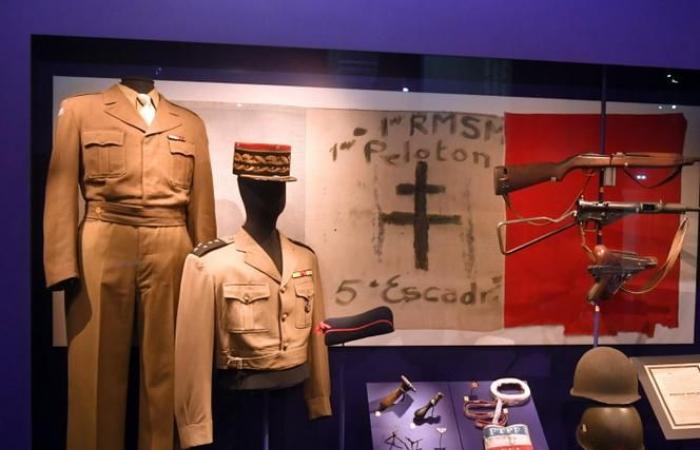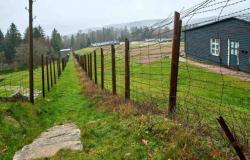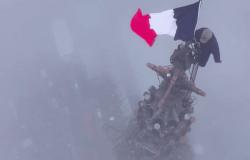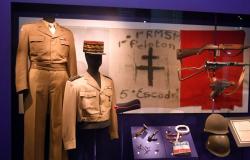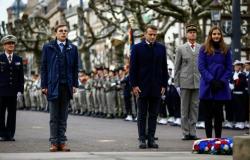Saturday November 23, during the day commemorating the 80th anniversary of the liberation of Strasbourg, the blue-white-red flag was raised at the end of the morning on the spire of the cathedral of the Alsatian capital. A way of replaying the perilous ascent made on November 23, 1944 in the early afternoon by the spahi Maurice Lebrun. As the fighting rages, the fighter of the second armored division (2e DB), engaged for the capture of Strasbourg, climbed the 142 meters of the spire to fix the standard at the top. It's still shooting in the streets around him, the feat is not without danger. Maurice Lebrun died in 2009, but the flag raised that day is still there, currently on display in a window at the historical museum of the city of Strasbourg.
The standard sewn from three pieces measures 2.70 meters: the blue is a little faded, on the central white there is a cross of Lorraine and the details of the spahis regiment written in black letters. The red with the irregular lower edge comes from a hastily cut Nazi flag. It is called the “Lorentz flag”, because it is a local butcher, Emilienne Lorentz, who sews this makeshift standard, encouraged by the spahis of the 1is marching regiment of Moroccan spahis. Jean-Paul Michel, president of the Association of the alumni house of the 2e DB, was pleased to see this legendary object again during his visit to Strasbourg. He was also delighted to see exposed underneath the black pennant of the “Sahariana di Cufra” company, which served in Libya in 1941. The two pieces kept for a long time within his association joined the city's museum heritage in 2006. from Strasbourg.
Read also | Marc Bloch, historian and resistance fighter, will enter the Pantheon, announces Emmanuel Macron
Read later
General Leclerc, one of the figures of the liberation of Alsace, was also the one who, at the head of a few hundred men, captured the oasis of Koufra in Libya, in March 1941, from the Italian army. According to the “oath” of the same name, Leclerc then declares – according to the best-known version but of which the only written trace is a few years later: “We are on the march, we will not stop until the French flag flies over Strasbourg Cathedral. »
“So that the memory is maintained”
“By donating these objects we wanted the story to be told from the beginning, we are here to ensure that the memory is maintained”explains Jean-Paul Michel for whom the pennant clearly represents the founding act of the Second Armored Division and the men's adherence to this oath, a real obsession for some. “This first victory of the Free French army established the credibility of De Gaulle”, he continues, hoping that the pennant and flag will remain permanently on display. Unlikely, replies the head of the museum's collections, Sylviane Hatterer, citing their fragility. The blue part is in fact quite faded, the piece of Emilienne Lorentz's apron dyed with methylene blue does not hold up well to the passage of time, “even if this flag is a historical witness to the liberation of Strasbourg”.
You have 34.57% of this article left to read. The rest is reserved for subscribers.


